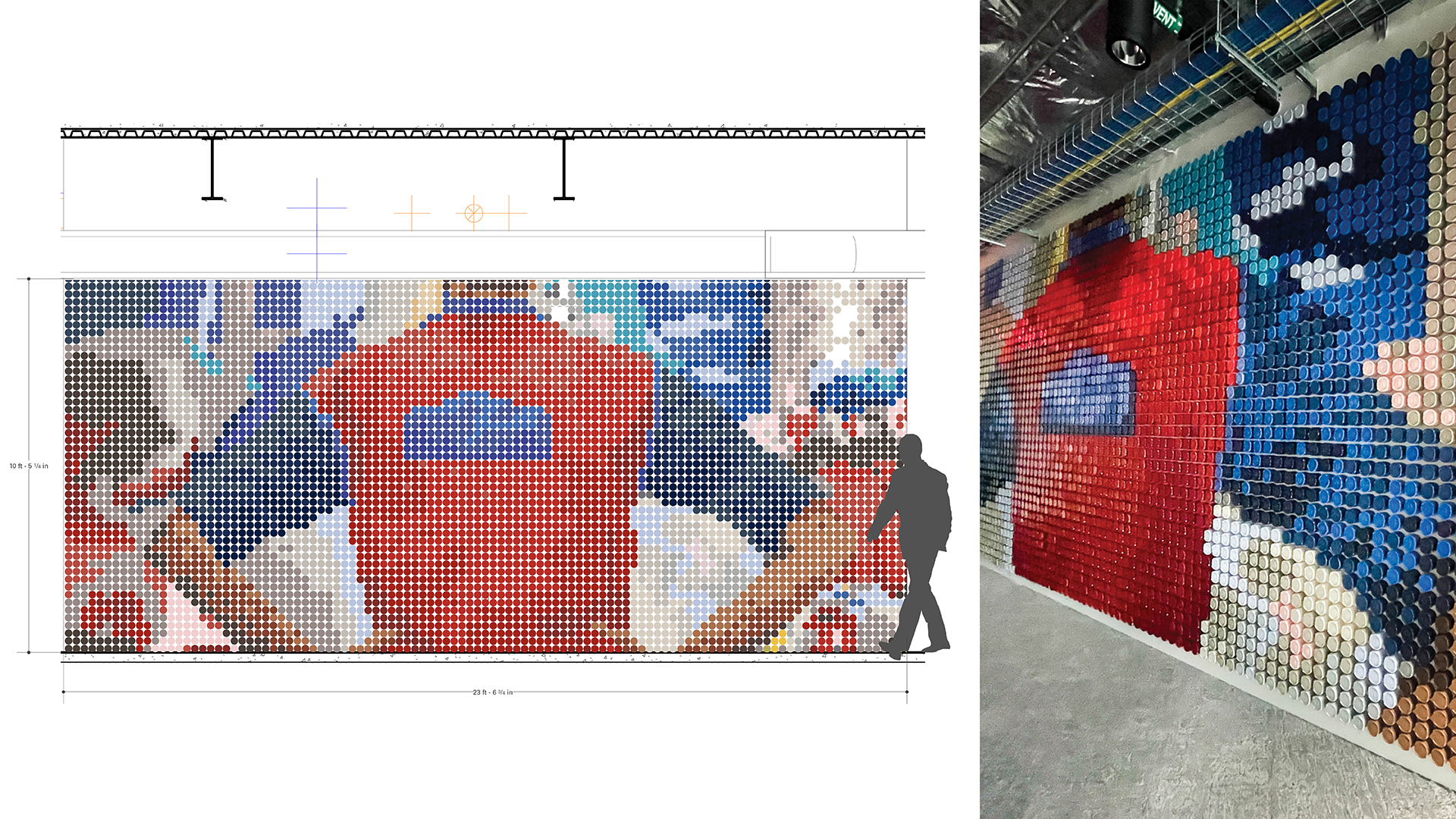We often see that tangible visual elements—like a logo, brand marks, and color palette—take center stage in a branded space. However, a brand extends far beyond the visual elements of logos and names. Its intrinsic qualities are far more subtle and intangible.
Behind every physical space is a brand. The viewer immediately builds an impression and associations through each interaction. This is recognized widely in interior design through choices such as materials and finishes, lighting options, furniture selection, and layout techniques. Yet, when it comes to applying the “branding layer,” these nuances can be forgotten in exchange for louder and more overt symbols of the brand.
“You don’t need to see the logo to know what it is.”
Paula Scher, Graphic Designer and Art Educator
WHAT IS EXPERIENTIAL GRAPHIC DESIGN?
Experiential graphic design (EGD) is a visual communication method within physical spaces to enhance the user experience, convey information, and connect people to their environment. Design methods include signage, wayfinding systems, murals, installations, and digital displays. EGD is a powerful tool for creating spaces that are not only functional but also engaging and leave a lasting impression that is in harmony with the brand’s overall identity.
Rather than stripping out character when translating a brand into a physical space, understated branding can force the design to present a richer and more impactful narrative than could be achieved by simply applying a limited range of brand marks and colors. How this materializes depends on the unique identity of each individual brand—its heritage, core values, local background, and mission.
BRANDING THROUGH CONCEPTUAL CLUES
For example, is your brand imaginative? Clever? Disruptive? Rather than stating these qualities on a brand values wall, perhaps these qualities can be shown through conceptual cues on screening elements, room identification signs, and custom murals—as realized on the campus of a global tech client in Morrisville, NC.
Challenged to literally and figuratively “disrupt the grid,” Little’s design relied heavily on experiential graphics to incorporate local relevance with a Raleigh-based muralist, maps, and connections to surrounding cities.

Or is the brand unexpected? Playful? Tactile? At Lowes Global tech hub, extraordinary uses of everyday products were crafted to guide users around every corner.
For example, a wall of light switches became an interactive display. Elsewhere, black washers were installed on steel pegs to be moved into different layouts, designs, and icons for varied brand messaging. The image below illustrates how—without needing to show the brand’s name—the iconic red vest came to life via 5,000+ spray paint lids mounted to changeable hardware to create an ever-evolving mural of product pixels.

Perhaps the brand is illustrious and polished? Charlotte Latin, one of the most prestigious private schools in the city, wanted to create a memorable entry experience for their new Performing Arts Center. Aside from designing a beautiful building and entry plaza, Little developed an identity with custom-made illustrations etched on internally illuminated vertical glass fins. The result is a building that is a beacon on campus and an exterior plaza where patrons can feel the excitement as the crowds congregate before each show.

Alternatively, is the brand purposeful? Inclusive? Elevated? The entrance to Campbell University, a faith-based school of Nursing and Health Sciences, features a custom-designed screen pulling references from human anatomy and the Holy Trinity to create a memorable impact upon arrival. Likewise, at their student union, even in traditionally loudly branded campus spaces such as the school spirit shop, the university chose to show its brand sparingly. Students provided inside jokes to incorporate into murals and room naming standards.

THE ULTIMATE GOAL: BRANDING AS A STORY
By demonstrating these characteristics rather than simply stating these values to the viewer, the design can utilize branding as a story, not a color scheme, to ignite subconscious feelings and present the core of a brand’s culture. This core, rather than a set of standards, logos, or taglines, authentically reinforces the brand and allows it to function as a strategic asset, bridging gaps between the internal and external brand image. Successfully implementing understated branding is a valuable reminder that, as always, actions speak louder than words.

